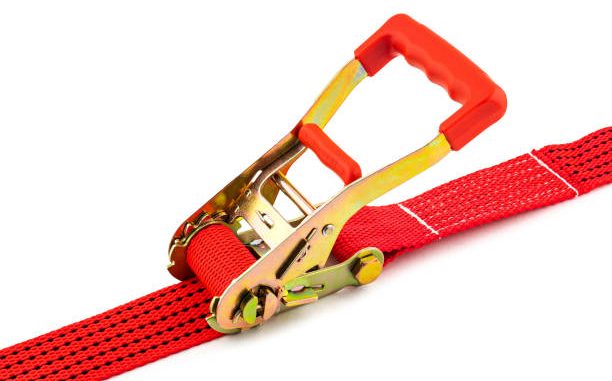
Ratchet Tie Down Straps are an essential tool for securing loads during transportation. However, every year these straps are damaged due to improper use and storage.
To secure a load, the hooked end of the strap must be attached to a stable anchor point on your trailer or truck bed. Then, the ratchet handle must be cranked back and forth to tighten the strap.
Instructions
Whether you’re an OTR trucker, a professional mover, or simply securing cargo on your pickup with flatbed trailer or moving van ratchet straps are an essential tool to have in your arsenal. They provide unmatched strength and security and can be used to prevent load shifts during transit.
Also known as lashing straps or tie down straps, a ratchet strap is a piece of webbing outfitted with tie down hardware. The hardware includes end fittings that allow the strap to attach to anchor points, loop over or around cargo or equipment, and a method of tightening and locking in place.
When you’re ready to use your ratchet strap, first open it to its full-flat position. Then, compress the release lever to unlock it.
Once the strap is fully taut, open and close the ratchet handle to a point where it’s secure but not overtightened. You can tell if you overtightened the strap if you can’t fit your finger between the strap and the object being secured. Once you’re satisfied, flip the ratchet back into its closed position and press it closed until you hear it latch.
Securing Cargo
Whether hauling ATVs on a trailer or lumber on a flatbed truck there is one common goal, to secure the cargo to prevent it from shifting during transportation. The best way to accomplish this is by using ratchet straps that are properly rated for the load. A ratchet strap’s workload limit is calculated by taking its breaking strength and dividing it by three.
Start by positioning each hooked end of your tie down strap through secure anchor points on your truck or trailer, like the rails or e-track system. Then, pull the free end of the strap up through the open slot in the ratchet mandrel. Make sure the free end of the strap is not too long as this can jam the ratchet when tightening.
Once the free end of your strap is in position, pump the ratchet handle to get rid of all the slack and begin cinching it down. Keep a finger on the ratchet handle to know when you’re reaching the working load limit and have to stop. Be careful not to overtighten the strap, as this can damage your cargo and also cause the ratchet to break.
Proper Use
Ratchet straps are a must-have flatbed trailer accessory for heavy-duty cargo securement. However, it’s easy to make mistakes when using these straps that can compromise your load or the ratchet itself.
Before you use a ratchet strap, inspect the webbing and ratchet handle assembly for damage or signs of wear. Lubricate the ratchet cao tang do handle by applying dry silicone spray or WD-40 to ensure smooth operation.
Afterward, thread the free end of your ratchet strap through the open slot on the mandrel, ensuring that there’s no slack in the webbing. Once the webbing is properly threaded, you can close and flip the ratchet handle to tighten it around your load.
Repeat this process until your ratchet strap is at the optimal tension. Avoid over-tightening as this may cause damage to your cargo or the ratchet mechanism itself. Always use a ratchet strap with the correct end-fittings, which include wire hooks, grab hooks, flat hooks, chains, or S-hooks. When storing your ratchet strap, keep it out of direct sunlight as over time UV light can degrade synthetic webbing.
Tie Down Strap Safety Tips
As with any tools or equipment, it’s important to inspect ratchet straps regularly for any signs of damage and wear. Moisture is a huge problem for ratchet straps, as it can lead to mold and mildew and also weaken the polyester tie-down webbing that these straps are made from.
Significant fading of color is also a good indication that a ratchet strap may be starting to degrade. Exposure to sunlight can also cause webbing to become weakened by harmful UV rays, so it’s best to keep these straps stored in areas away from direct light.
Additionally, lubricating your ratchet straps periodically is also a good idea. This will help the hardware move smoothly and prevent corrosion. Just be sure to only use a dry silicone spray, as solvents like WD-40 can cause harm if they come into contact with the webbing.
Ratchet Strap Tightening Guide
The best way to ensure that your ratchet straps work correctly and last longer is to maintain them properly. Regular cleaning and lubrication help to keep your ratchet straps in good working condition. It is also important to store them in a location that is moisture free and away from sharp objects or corners that can cause damage.
When it comes to ratchet straps there are many different options to choose from based on your cargo securement needs. There are endless loops, e-track fittings, flat hooks, wire hooks and s hooks. Choosing the right end fitting will help to keep your ratchet straps safe and secured while you are on the road.
When selecting ratchet straps always look for ones that have an easily readable working load limit tag on them. It is against the law in multiple states to use a ratchet strap without one and it could put you at risk of having to pay fines or even worse, losing your trucking job because of it. Also, be sure to choose a quality ratchet strap that has been designed to be strong enough to secure the load it is rated for.
